Disclaimer: This post contains affiliate links. This means that I will receive a small commission from any purchase made from this post at no additional cost to you.
Hi Everyone! There is nothing like freshly baked bread. It’s warm, fluffy and makes your house smell incredible. But how is it made and which one do I make? Do I have to use yeast? How do I use yeast? What is the perfect bread proofing temperature? I’ll answer all these questions and more in this comprehensive bread making guide. So you can’t screw this up even if you are a klutz like me. So come bake a mess with me and let’s make some bread.
The Difference Between Quick Bread And Yeast Bread
The main difference between yeast breads and quick breads is the leavening agents. Quick bread uses baking soda and baking powder to leaven the bread and make it airy and fluffy. Examples of this would be a zucchini bread or a banana bread both of which I have on this blog.
Where as yeast breads have yeast that leavens them. Yeast breads are a dough that is made up and kneaded then left to rise at least once before baking. Quick bread is just a batter that is made up and baked. Much like a cake.
So what is the difference between Cake and Quick Bread?
So if quick bread is made from a batter and cake is made from a batter, what’s the difference? Well the difference is that quick bread typically has less sugar and fat than cake which leads to a coarser crumb.
So, now that we have talked about the difference, the rest of this post will be about yeast bread.
Yeast
Yeast is a key element in making bread. Yeast is a living organism that feeds on sugar to produce carbon dioxide This when added to bread allows the bread to get airy and fluffy.
Kinds of Yeast
Instant Dry Yeast
This type of yeast can just be added to your dry ingredients and when you add your wet ingredients, it starts to activate.
Active Dry Yeast
This is the type that is added to warm water and then left to activate. This type of yeast is most widely popular but the choice is totally up to you.
I personally like ADY better because making bread is a long process and to get through hours of work to find that your instant yeast didn’t activate for whatever reason is SUPER frustrating. With ADY you can see in the very beginning if your yeast activates or not.

How To Activate Yeast
Yeast is very easy but a little finicky to activate. The first thing is that your water must be between 100-110•F to activate your yeast. Too hot and it’ll kill your yeast, too cold and your yeast will not activate. Just sprinkle the yeast on top of the water but do not stir. Just leave it to activate for 5-10 minutes. If you are worried that it won’t activate (like I always am), you can add a little bit of sugar. That will help it activate. You will know it’s activated when the mixture starts to bubble up and smell like bread.
There are a few ingredients that will effect your yeast rising.
Too much salt can kill your yeast so just make sure you measure correctly and NEVER sprinkle salt on top of your yeast or vise versa.
The next thing that can effect your dough rising is sugar. Yeast feeds on sugar but it also feeds on water. The problem is that sugar absorbs water. So too much sugar absorbs all the water and the yeast eats up the sugar, leaving your dough very dry and slow to rise.
Too much flour can make your dough stiff and dry and like I said before, your dough being dry and not having enough water makes your dough rise very slowly.
The last thing that can effect your bread rising is your dough getting dry on the top. This can make it difficult for the dough to rise in the oven. You can put a damp towel over your dough to keep it moist or or even better, a lid to keep up that humid environment.
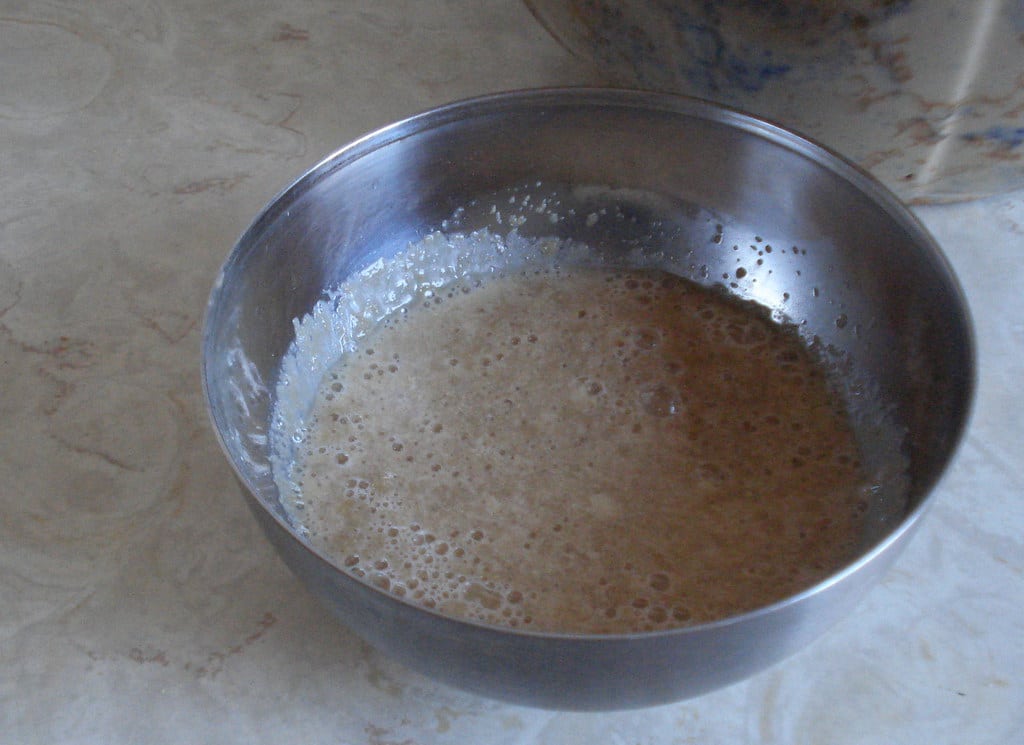

Making The Bread Dough
In general, a bread dough is a 5:3 ratio of flour to liquid. Basically the more flour you add to a bread dough, the dryer and denser it will be and the more liquid you add the fluffier and moister it will be.
When talking about bread, we think about the hydration levels. Most people do an 80% hydration level. What that means is the ratio of water to flour. So if we think about our flour as 100% then for example an 80% hydration level would be 80% of that flour.
1000g of Flour x .8 = 800g of Water
The process for putting the dough together and kneading is different depending on what type of bread that you are making. We will go over that a bit later.
But for most bread, you just add the wet ingredients to the dry ingredients and mix it up until a dough forms.
How To Knead When Making Bread Dough
Now, first and foremost you have to know what you are using to make the bread because that will change the amount of time that you need to knead the dough for. Kneading by hand will take twice as long as with a machine.
To get a chewy and fluffy texture to your bread you have to develop the gluten in the flour. Glutan is a very stretchy protein that holds bread together and gives it texture. Different kinds of flour have different percentages of gluten. The higher the gluten content the chewier your final product will be. You can read more about this in my baking substitutions post but here are a few options.
Flour by Gluten Content
Then there is glutan free options for those with allergies to gluten. And as far as glutan free flours, there is :
Glutan Free Flour
Almond Flour (Good for making macarons)
How long to knead your dough
Most recipes say to knead your dough for 10-20 minutes. But what you are really looking for is for the dough to be smooth and elastic and for it not to stick to your fingers.
The Window Pane Test
You can test if your dough is ready by doing what’s called the window pane test. Take a small ball of dough and stretch it until you can see through it or you can see light coming through to the other side. If it breaks while trying to do this, it needs to be kneaded some more.

Why and how do I allow the bread to rise? What Is The Perfect Bread Proofing Temperature?
After kneading, the dough needs to rise twice, before baking, depending on the recipe. We do this to let the yeast expel the trapped CO2 and develop the glutan. The dough is then punched down the first time to allow that CO2 to escape and so that these gluten proteins in the bread that have been developed don’t break.
Now, with that first rise, these proteins are stronger and can support a second rise to let the gluten strengthen more. This is all so that when it goes in the oven and rises there, those gluten strands won’t break. This all leads to a fluffier and airier bread.
To let the dough rise, place it into a lightly oiled bowl so that nothing sticks. Now just simply leave this covered in a draft-free, warm and humid spot. I like to leave mine in the oven with the oven light turned on. Just simply, leave this there until doubled in size.
This could take anywhere from 1-3 hours. You can also leave it to slowly rise in the fridge overnight. You just don’t want your dough to over proof or under proof.
You can check for that in a few ways which I will go over next.
The perfect bread proofing temperature is between 75-78•. At this temperature the bread dough will have enough time to develop flavor but still rises quick enough to be a manageable time. You can use a thermometer to make sure that your space within that temperature range.
Like I said, I like to leave mine in the oven with the oven light on. If it is too cold in my oven, like in the winter months for example, I like to preheat the oven to 200, and then when it preheats, shut it off and wait for it to cool to the 75•-78• range.
How to know if my bread is over proofed or under-proofed
Proofing your bread dough is very important. It will effect the overall appearance and texture of your finished product.

Over proofed means that the dough proofed for too long, got too big and gave off too much CO2.
Properly proofed means that it was adequately risen and the right amount of CO2 escaped.
Lastly, under proofed bread happens when the bread is not allowed to rise for long enough so the CO2 is not allowed to escape completely.

What it Will Look Like
For under proofed bread, one of the most common traits is tearing on the sides. Because the CO2 was not allowed to escape properly during the proofing stage, it escapes when the dough bakes in the oven. Because it is escaping during the baking process when the crust is beginning to form, it creates a ripping or bursting effect.
You might think that under proofed bread would be kind of small but actually it has a lot of height do to that CO2 needing to escape. It just has a very uneven shape and a smaller width and length, do to the improper development during the proofing stage.

A properly proofed loaf of bread will be evenly proportioned and will hold it’s shape in the oven. And also will be a beautiful golden brown color.

Over proofed bread will be a little bit flat because that over proofing will destroy the structural integrity of your bread. It will likely lose its shape in the oven. The color is likely to be pailer as well because during the proofing process the yeast is eating up all the sugar in the bread. If that process goes too long it eats up most of the sugar making it harder for the bread to caramelize and turn brown.

What The Texture Will Be Like
An under proofed bread loaf will be very dense, have tight and uneven air bubbles, and gummy crumb texture. This is due to the fact that the bread was not given the time to develop and give off CO2.

Properly proofed bread will be airy and fluffy. It will also have larger air bubbles that are evenly dispersed.

An over proofed bread loaf will have very large air bubbles due to the over production of CO2 in the dough.
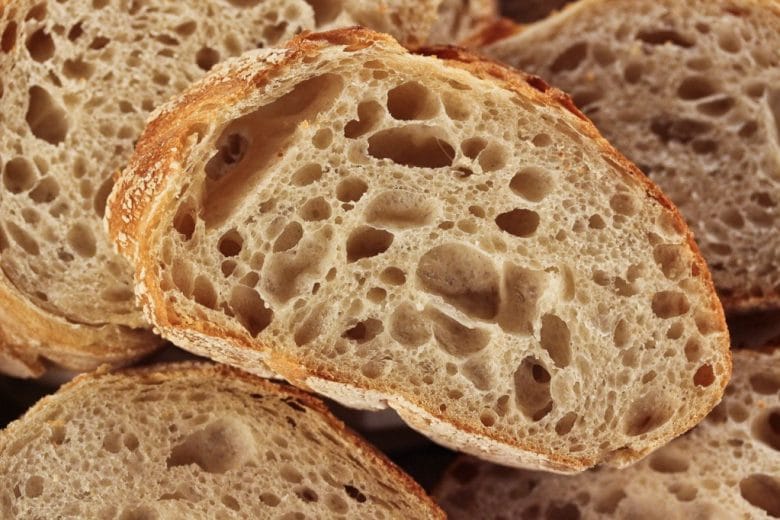
Will over proofing or under proofing change the flavor of my bread?
Yes, The longer bread is left to proof, the more developed the flavor becomes. If it rises too quickly, you will end up with a bread with a flat flavor. I also find that under proofed bread tastes more yeasty. Probably because of the yeast not being allowed to develop fully. That’s just my personal opinion, experience and assumption as to why. I can’t find any evidence to support this. That’s just what I find..
You can make sure that your dough doesn’t under or over proof by using a “proofing bucket”. I like it because it has little guides that show how big your dough should get. And it has a lid that traps that humidity in promoting the right environment for rising.
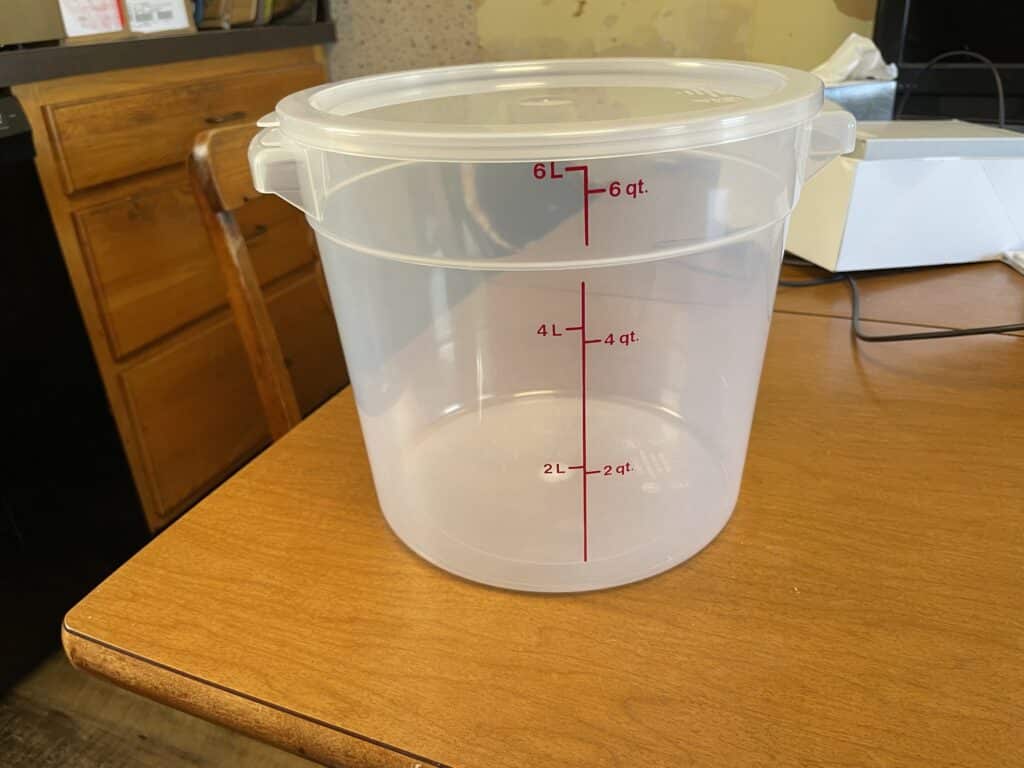
Types of Yeast Bread
When it comes to bread there are many different types. I am only going to talk about the most common ones because if I touched on every type of bread, we would be here all day. I will also be linking to recipes that I have made if I have made that type of bread.
French Baguette
A French baguette or French bread is a loaf of bread originating in France that is known for it’s long, oblong shape. The bread also is known for it’s slits in the top that help gas escape when baking. Baguettes typically consist of flour, yeast, water and salt.
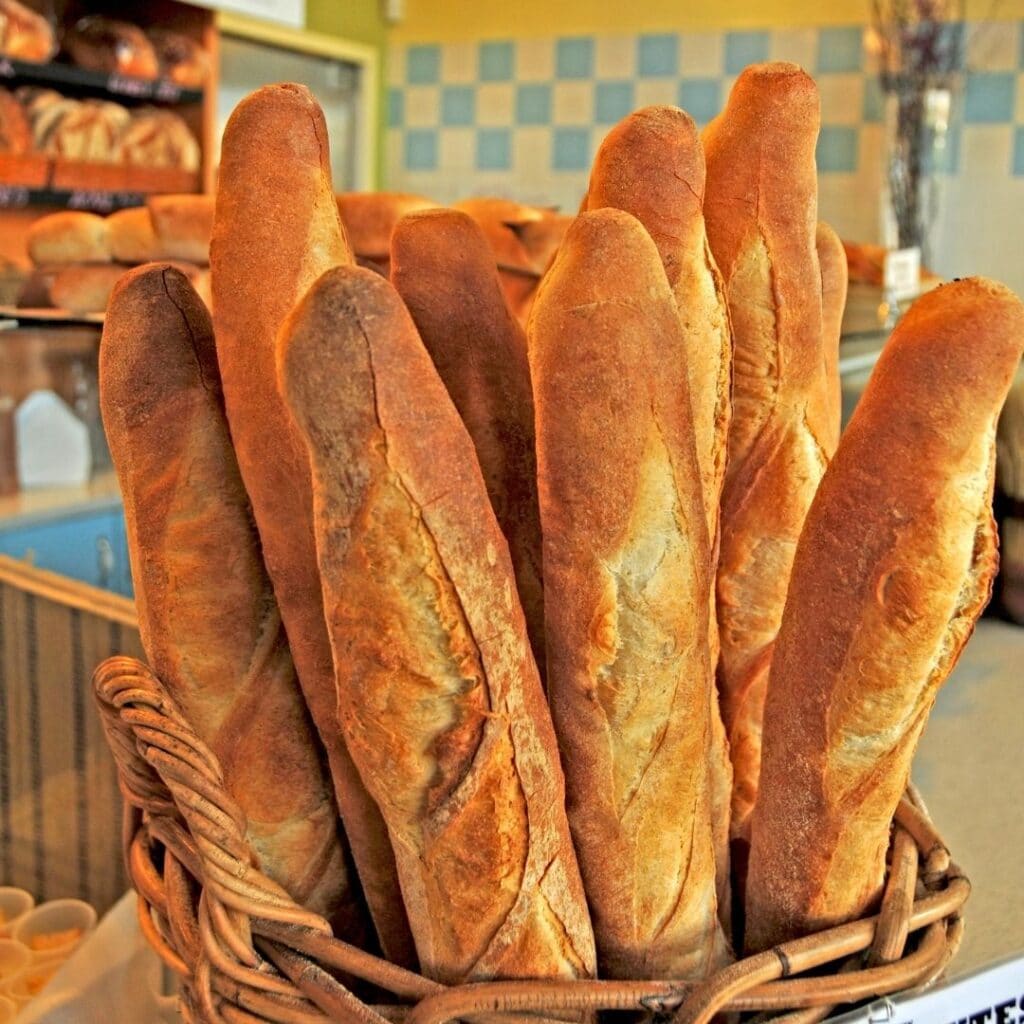
Brioche Bread
This bread is another French bread that has the addition of milk and eggs as well as the other ingredients. This leads to a slight sweetness and yellow hue. This is a very soft and pillowy bread and doesn’t develop a hard crust on the outside.
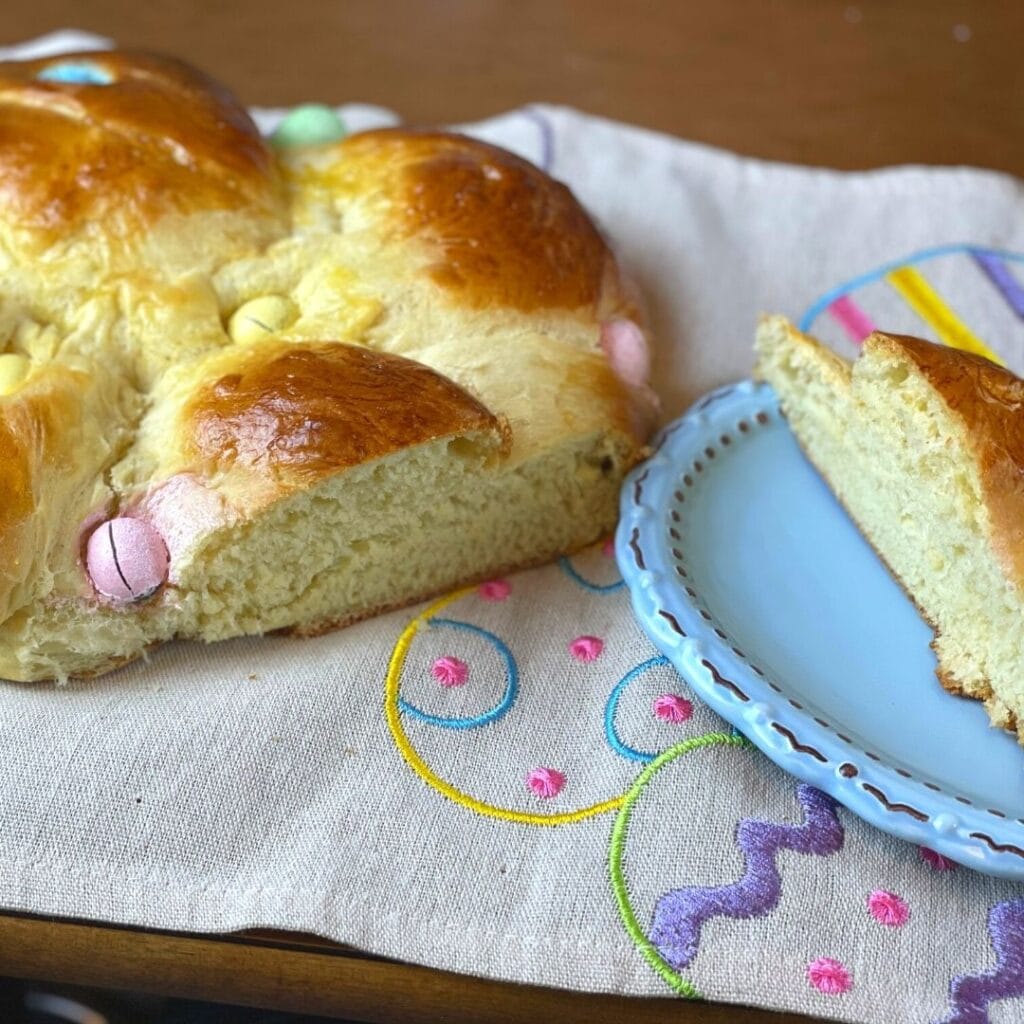
Ciabatta Bread
Ciabatta is an Italian invented crusty bread that is made with water, salt, yeast and flour. It has a crust on the outside and soft and pillowy on the inside. Perfect for making paninis or other sandwiches.
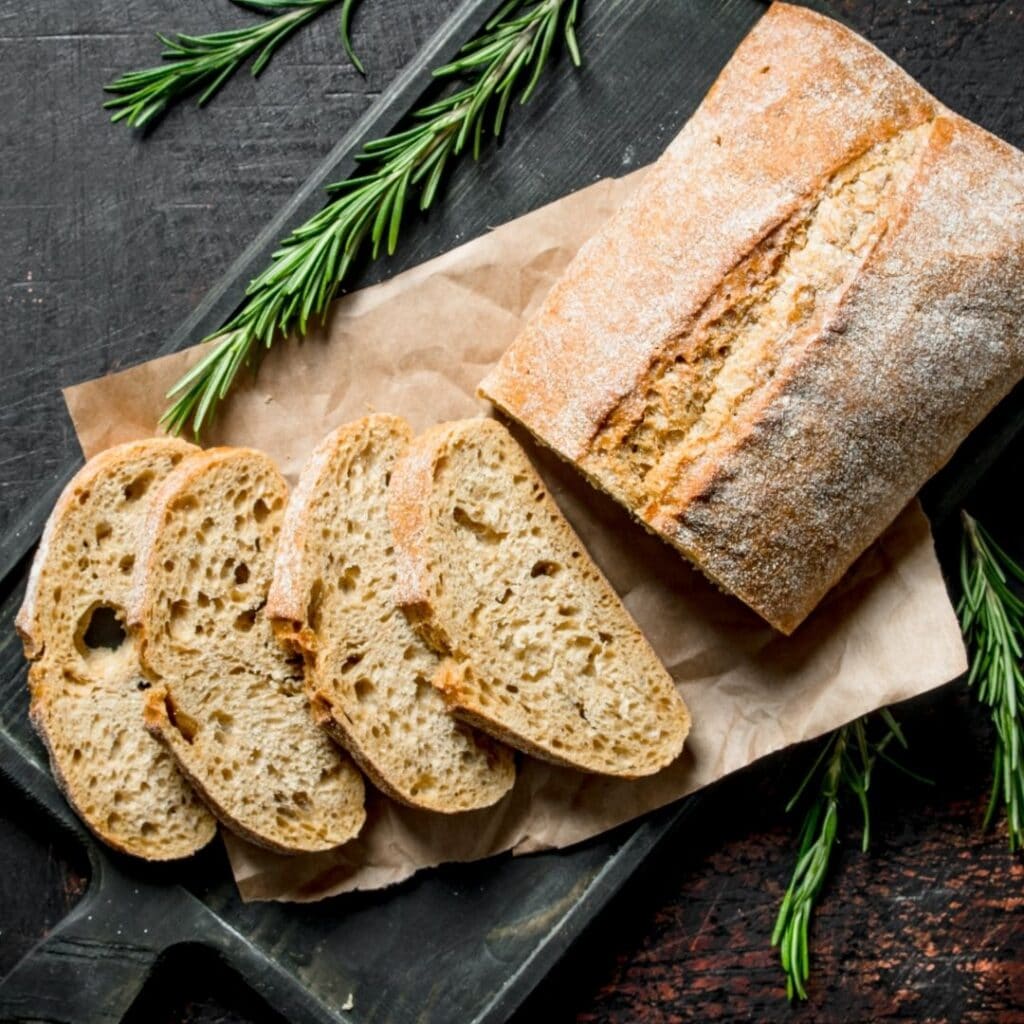
Focaccia Bread
I would definitely recommend this type of bread to anyone that’s a beginner. It is soaked in lots of olive oil to give it great flavor and a fantastic crunchy crust. You can also add fresh herbs or pesto, some people even add cheese.
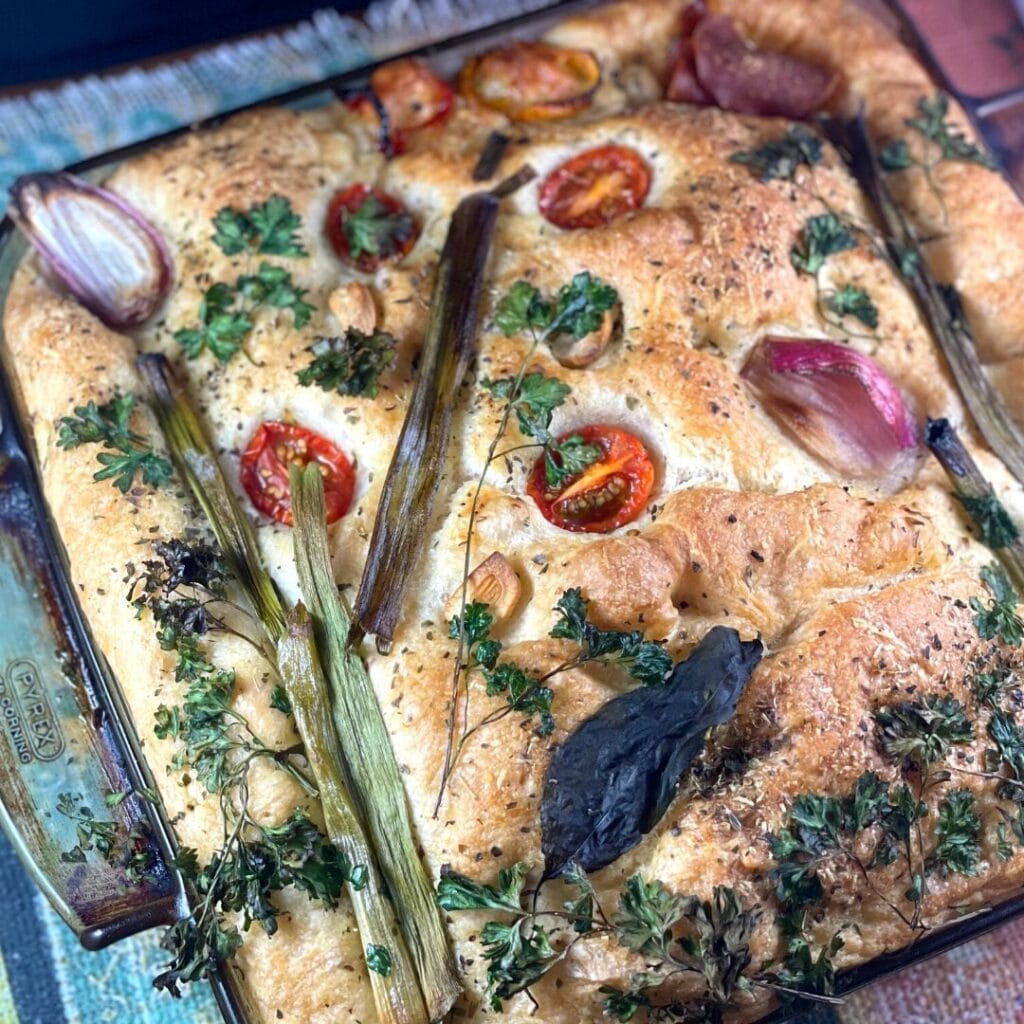
Sour Dough
Sour dough bread works a little differently. Sour dough is made with a starter which is what leavens the bread. This starter is made up of flour, yeast and water. A sourdough starter is fed flour everyday. The yeast then eats the sugar in the flour and produces CO2, activating and becoming the leavened in your bread. This type of bread is pretty time consuming because it has to rest between each step. It has a very crunchy crust exterior and a fluffy interior. This bread is best used to make toast or sandwiches.
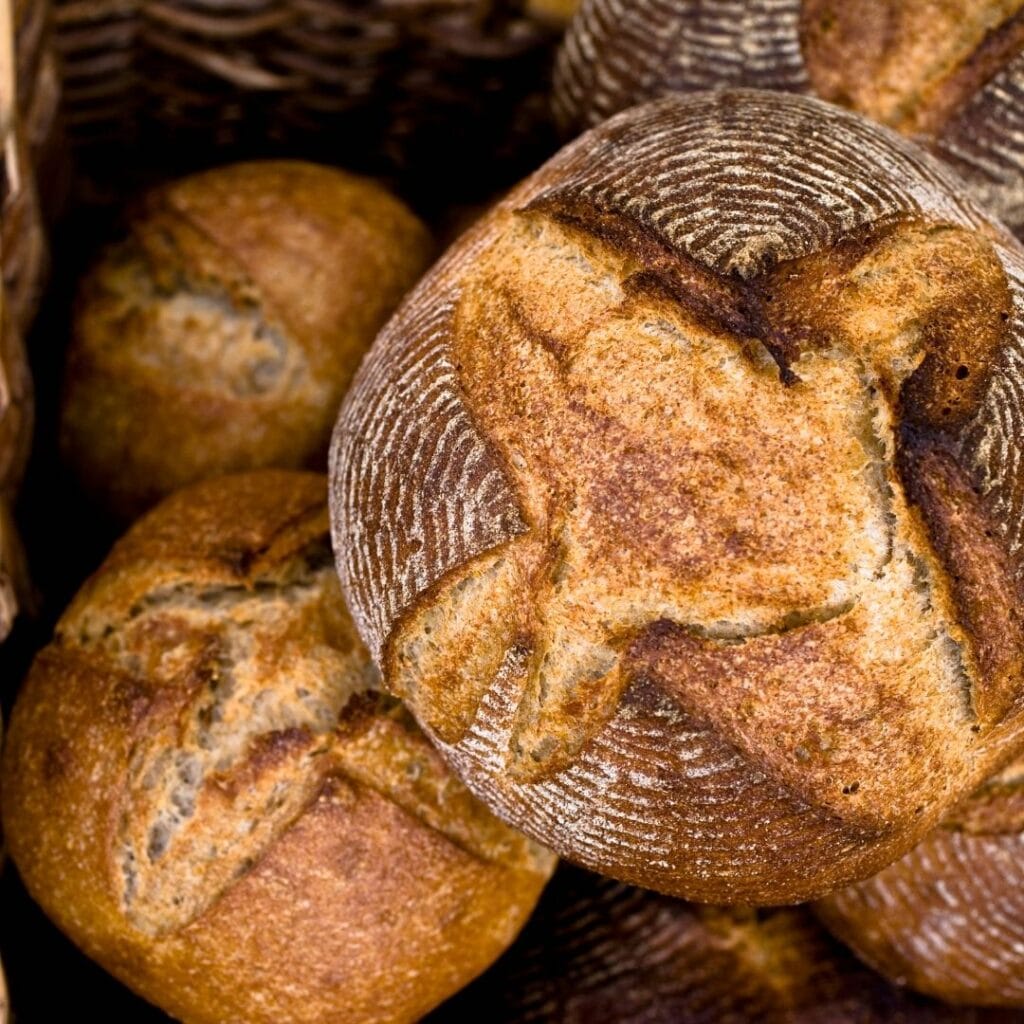
Simple Loaf Breads – White Bread, Multigrain, Wheat Bread, Rye
This is just a very simple and basic bread recipe used to make sandwiches. It has no crusty exterior. Soft on the inside and the outside. White Bread, Rye Bread, Multigrain and wheat bread are used to make sandwiches, can just be eaten with butter or can be toasted. These can also be used to make things like French toast.
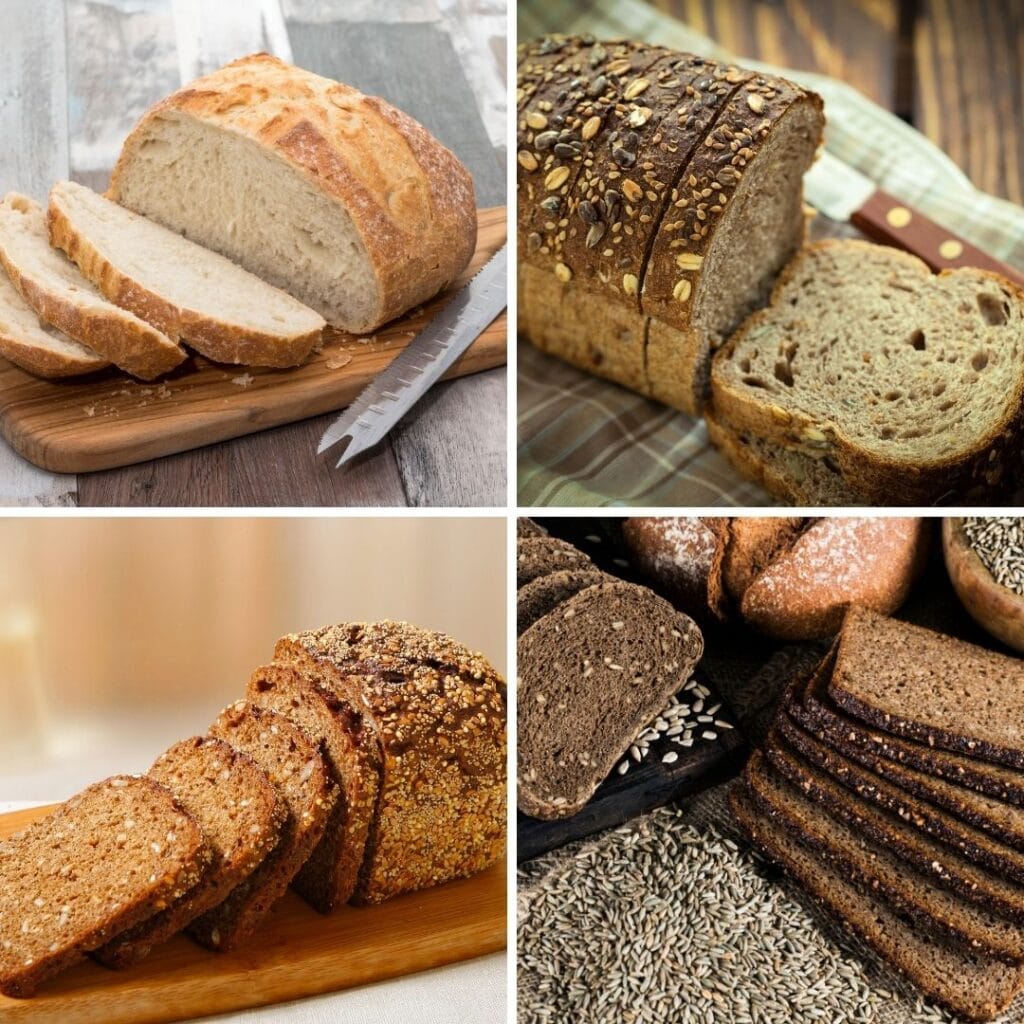
Boiled Yeast Breads – Bagels and Pretzels
Some yeast breads require boiling in water and/or baking soda to give it the texture that this baked good is known for. This brief process sets the crust before baking. Click here to see the soft pretzel recipe that I have on my channel.
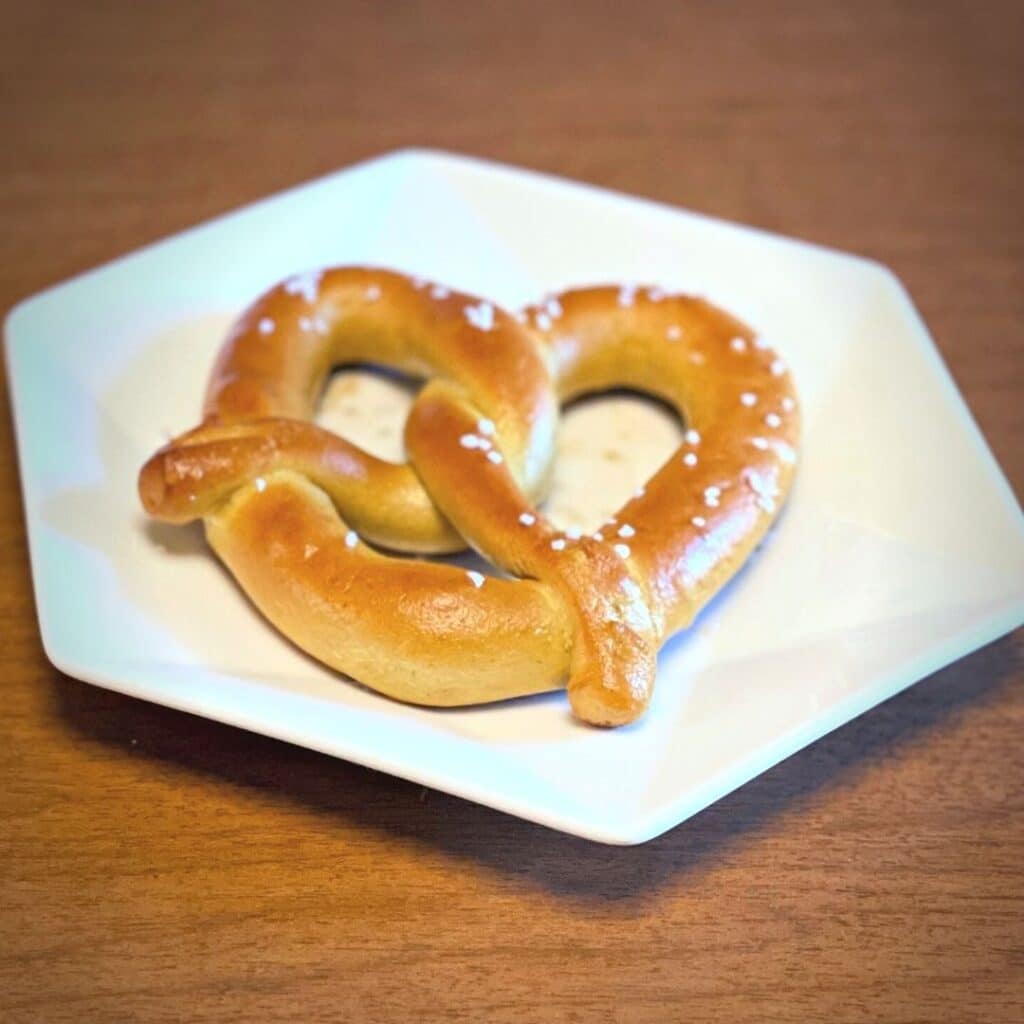
Phew…. that was a lot. If you have made it this far, thanks you so much for reading and I hope this answers all of your bread making questions. Bread can be quite a long process but it really is quite simple. It just takes some trial and error. It is actually quite a relaxing and meditative process. If you have any additional questions, please don’t hesitate to ask. And if you have any techniques or tips that I didn’t share. I would love to hear them in the comments below. If you liked this post and you want to learn how to tackle cheesecake next, click here. Follow me on Facebook, Instagram, pinterest , twitter and snapchat to see what I’m up to next. Remember, don’t be afraid to bake a mess. And I’ll see you all next time. Happy Baking!
Sources
https://www.landolakes.com/expert-advice/the-art-of-quick-bread/
https://bakerpedia.com/processes/kneading/
https://challengerbreadware.com/bread-techniques/identifying-proofing-levels-in-baked-bread/
https://www.kingarthurbaking.com/blog/2019/03/12/where-to-put-dough-to-rise
https://kneadrisebake.com/why-does-dough-need-to-rise-twice/
https://www.homestratosphere.com/types-of-bread/
https://www.tasteofhome.com/article/9-reasons-your-bread-isnt-rising-and-what-to-do-about-it/
https://www.youtube.com/watch?v=mV7tcR8PlIs
If you have any questions or comments please don’t hesitate to leave a comment down below, message me on instagram, facebook or leave me an email.
Great post! I really want to get into baking my own bread this year so this info will be really helpful for me. Sounds like you really know your stuff!
I definitely try to. I love talking about and learning about this type of stuff. I could just go on for hours. I’m so glad you found it helpful!
Thanks for the article- bread is one of the best things ever!
It really is. Warm bread with butter is the best!
you’re so welcome! I’m kicking myself that i didn’t do more bread recipes during quarantine. I don’t know what I was doing.
Great post! We got into bread baking during lockdown but it’s been a while. I’m inspired. Thanks!!
Definitely imagine that which you said. Your favourite reason appeared to be on the net the easiest thing to take into accout of. I say to you, I certainly get annoyed whilst people think about concerns that they just do not know about. You managed to hit the nail upon the highest and also outlined out the entire thing without having side effect , people could take a signal. Will probably be again to get more. Thank you
Thank you so much for reading. I very much try to add only what is needed while still trying to be as thorough as I can. It’s kind of tough for a post like this because there is so much to know about making bread. So, I’m so glad you found it helpful without being too wordy.
This website can be a walk-by for all the information you wished about this and didn’t know who to ask. Glimpse right here, and also you’ll definitely uncover it.
Hello! I just would like to give a huge thumbs up for the great info you have here on this post. I will be coming back to your blog for more soon.
I love the efforts you have put in this, appreciate it for all the great articles.
I think this is among the most significant information for me. And i’m glad reading your article. But wanna remark on few general things, The web site style is great, the articles is really great : D. Good job, cheers
Thank you so much. Thank you for reading also!
Great work! That is the kind of information that should be shared across the internet. Disgrace on the seek engines for no longer positioning this post higher! Come on over and visit my website . Thank you =)